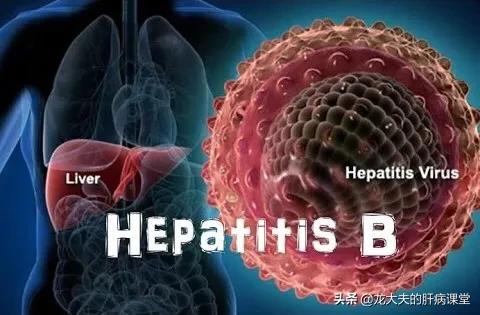Transaminases are over 200! What's wrong with the hospital virus 2 1/2 tests being normal?
Normal values for transaminases are0-40U/LIf the value is higher than this value, it is a case of high transaminase. There are various reasons for high transaminase, one is physiological factors and the other is pathological factors.
Physiological factors:Prior to having a liver function test, are there any bad habits such asDrinking alcohol, taking pills, staying up late, exercising, eating fatty foodsetc., can cause abnormal liver function.

The presence of these bad habits may affect the results of the test and it is recommended torechecking; in the absence of these habits, it is recommended thatfurther check。
Pathological factors:The causes of liver function abnormalities are complex, ranging from pharmacologic liver injury factors to liver diseases that may be associated with.Hepatitis B, fatty liver, cirrhosis, hepatitis C and alcoholic liverand other diseases can cause it, so the diagnosis needs to be confirmed by tests.

The main way to find out if you have any of these diseases is through:Hepatitis B half-pair test, Hepatitis C antibody test and color ultrasoundto confirm the diagnosis.
If there is no liver disease, but only drug-induced liver damage factors, the doctor will treat the patient with liver-protecting therapy according to the degree of liver damage.

Liver disease factors causing abnormal liver functionPatients must do a comprehensive examination, find the right time for treatment, and carry out liver protection treatment based on actively removing the causes of the disease.
Tests found abnormal liver function, patients should not blindly use drugs, must beGo to a professional and formal liver disease hospital for examination, find the cause of the disease and treat the symptoms.In addition, it is important to note thatEat a light diet, avoid alcohol, and avoid overwork.etc.
A transaminase of 200 or more suggests possible hepatocellular damage, mostly from inflammation, but also, to a lesser extent, from ischemia, bruising, and hypoxia.Hepatitis B is one of the most important causes of liver damage, but it does not mean that all transaminase elevations are caused by hepatitis B.
After the liver cells are damaged by inflammation, the transaminases, which are active only inside the liver cells, will reverse out of the cells through the cell membrane and be absorbed by the blood, thus increasing the activity of transaminases in the blood. So.Transaminases are proteins that the body itself has. They're not toxic.Don't get too hung up on the issue of high enzymes, in terms of finding the cause and then targeting the treatment.
The aminotransferase of more than 200 (let's assume that it's alanine aminotransferase!) elevated, which is moderate liver damage, and the patient's tests were normal for both halves, said they should have been negative for both halves in their entirety, or just positive for surface antibodies, which would rule out hepatitis B, theAdditional tests are needed to make a definitive diagnosis.. Based on the importance of the common clinical causes of elevated transaminases, some of the following factors to consider for elevated transaminases:
alcoholic liver damage: Related to long-term heavy drinking, women's drinking is somewhat more damaging than men's.
drug induced hepatitis: Chinese medicines, pCms, and herbal medicines are the most important causes of pharmacological liver damage. Other drugs that cause pharmacological hepatitis include antituberculosis, antipsychotics, antibacterials, antifungals, antipyretics, antitumor agents, and so on.
Non-alcoholic fatty liver:Chronic alcohol consumption can lead to fatty liver, and metabolic factors such as obesity can cause fatty liver, usually accompanied by elevated blood lipids and blood glucose, and the diagnosis mainly relies on ultrasound and liver puncture pathological tissue examination.
Autoimmune liver disease:Most common in women, it is diagnosed by examining autoimmune antibodies and antinuclear antibody profiles, and may be accompanied by elevated glutamyl transpeptidase and alkaline phosphatase.
Hepatitis caused by hepatitis viruses other than hepatitis B:For example, Hepatitis C virus, Hepatitis A virus, and Hepatitis E virus are diagnosed by testing for antibodies to the corresponding viruses. Examples include antibodies to hepatitis A, hepatitis E, and hepatitis C.
Liver damage caused by other pathogenic microorganisms:EBV and cytomegalovirus are the most common viruses causing liver damage. Influenza virus, Mycobacterium avium conjugatum, Scrub typhus, typhoid fever, epidemic hemorrhagic fever, leptospirosis, and schistosomiasis are also common causes of liver damage. These diseases, usually accompanied by fever and systemic symptoms caused by other pathogenic infections.
In addition.Staying up late, not getting enough rest, strenuous exerciseIt may also cause elevated transaminases, but unless liver damage is caused by chronic fatigue and occasional lack of rest, it is not that high. Most liver damage caused by these factors resolves on its own with rest.
In the course of a number of other diseasesFor example, in the course of heart disease, there is an abnormally high level of glutamate aminotransferase, and if this is a particularly high level of this aminotransferase, in this case it is important to check if there is something wrong with the heart, muscles, etc.
In conclusion, Dr. Long reminds patients who are reluctant to go to the doctor's office to analyze their specific situation and that not all elevated transaminases are hepatitis B. Just because you don't have hepatitis B doesn't mean you don't have other diseases. The most common other factors are pharmacologic liver damage, and the most often overlooked are alcoholic liver disease and non-alcoholic fatty liver disease. And for women, autoimmune liver disease is also something to look at focusing on ruling out.

Feel free to comment, private message, like and retweet!
For more fun and heartwarming medical facts about liver disease and infectious diseases, follow @Dr. Long's Liver Disease Class!
A normal two-to-one half means you don't have hepatitis, but that doesn't mean your liver isn't damaged! Other causes can also cause liver damage
Transaminases are over 200! What's wrong with a hospital test for viral 2 to 5 being normal? No, there are many reasons for elevated transaminases, not necessarily hepatitis.
Either the data is wrong or something is wrong.
Check again.
This question and answer are from the site users, does not represent the position of the site, such as infringement, please contact the administrator to delete.